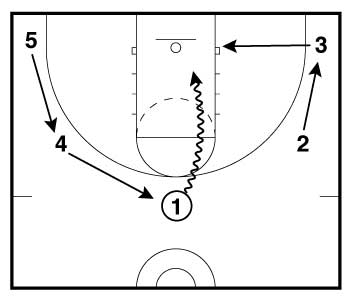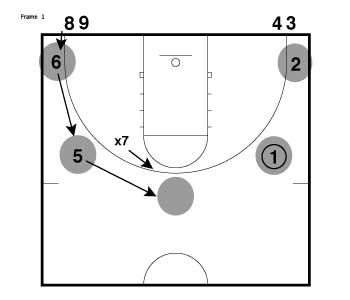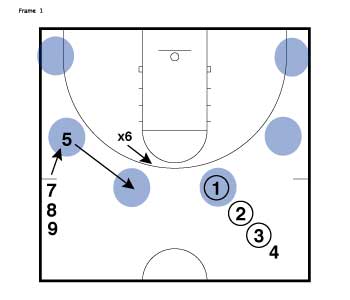28 Feb Rebounding Responsibility Drill
Since the Read & React promotes spacing, player movement, and ball movement, some suggest that a team can't rebound well amidst the constant shuffling. Of course, we disagree. But, due to all that movement, sometimes rebounding responsibilities can get lost in the continual mix of players.Here's a drill that can clarify those rebounding responsibilities for you and your team. Rick explains this drill completely in the audio portion below, but I thought a diagram or four might be helpful. And, for more audio from PGC Basketball's interview with Rick, you can check out this post and this one. 3:15 - Rick Torbett on Rebounding Responsibility The best part of this rebounding component is you can attach it to the end of any 5 player drill. That way you can work on whatever actions you need to while still getting in your rebounding work. In this instance, we used a simple 5 player Circle Movement Drill.

Start with any player driving North-South to the goal. This forces the other players to Circle Move one spot. Here, 1 drives North-South right causing Circle Movement right.



